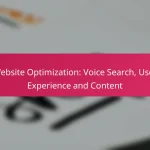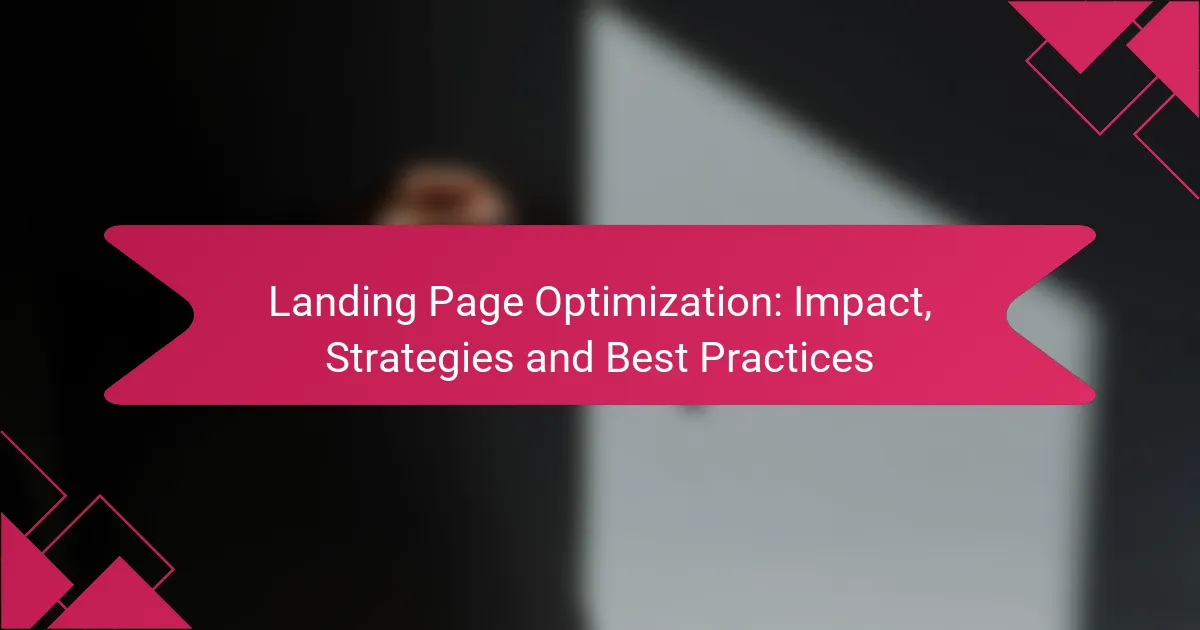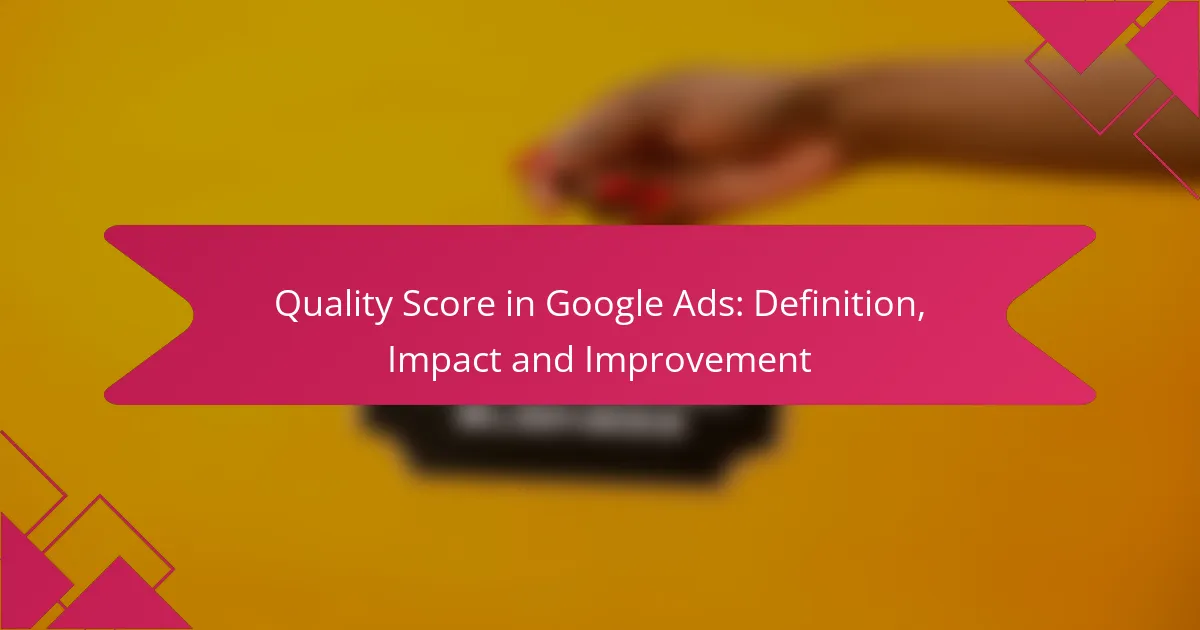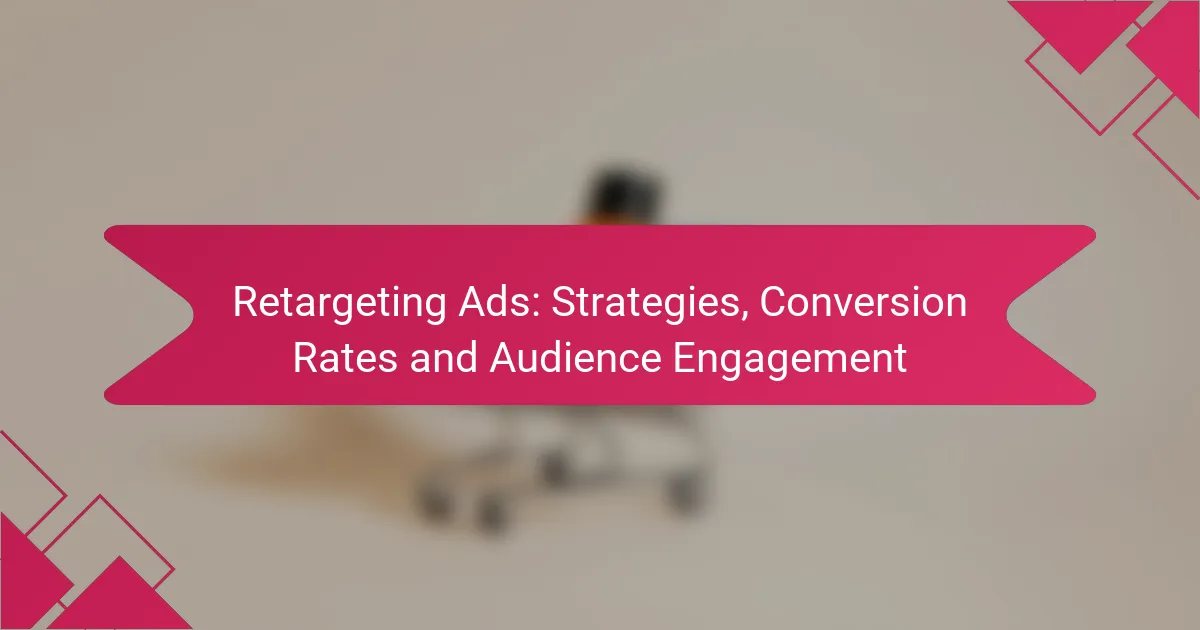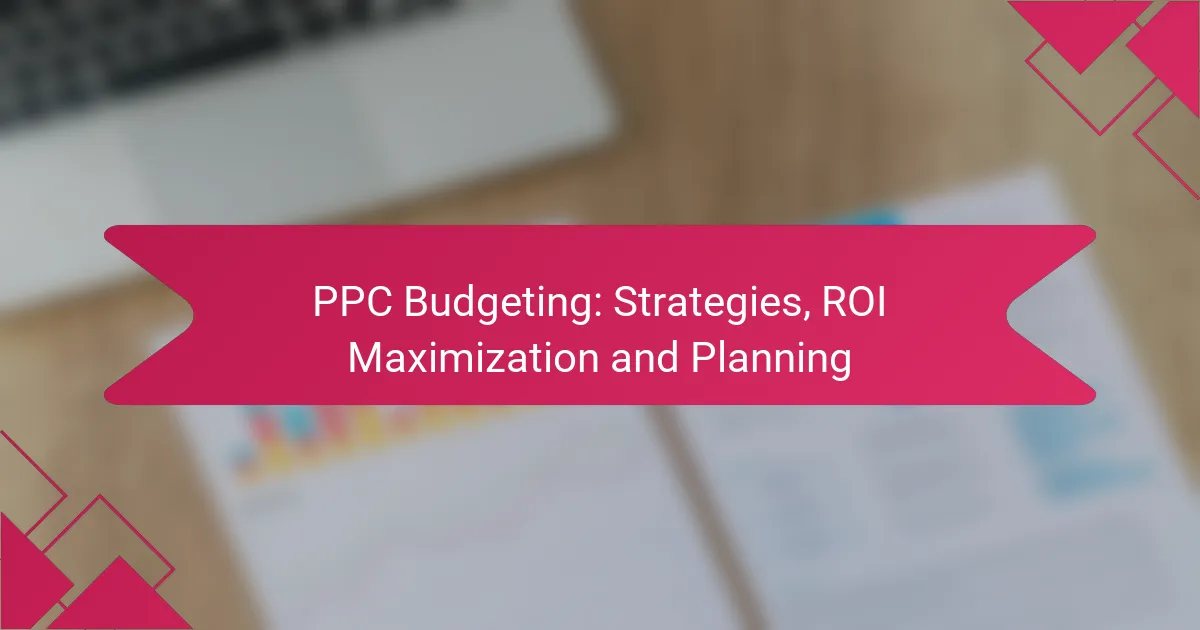Landing page optimization is crucial for improving conversion rates by creating a seamless user experience that motivates visitors to engage with your content. By focusing on design, content clarity, and page load speed, businesses can effectively lead potential customers toward taking desired actions, such as making purchases or signing up for newsletters. Implementing targeted strategies and utilizing analytical tools can further enhance these efforts, ensuring that your landing pages are both effective and user-friendly.
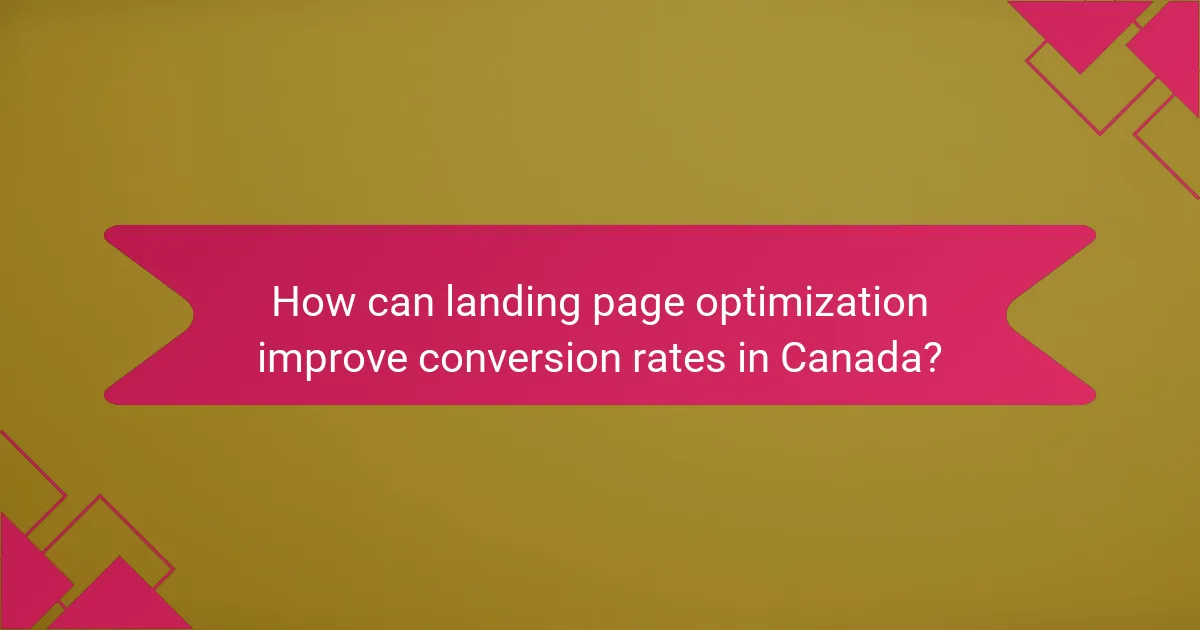
How can landing page optimization improve conversion rates in Canada?
Landing page optimization can significantly enhance conversion rates in Canada by creating a more user-friendly experience that encourages visitors to take action. By focusing on elements like design, content, and load speed, businesses can effectively guide potential customers toward completing desired actions, such as making a purchase or signing up for a newsletter.
Increased user engagement
Optimized landing pages lead to increased user engagement by providing relevant content and a clear call to action. When visitors find what they are looking for quickly, they are more likely to stay on the page longer and interact with the content. This can be achieved through concise messaging, appealing visuals, and intuitive navigation.
To boost engagement, consider using A/B testing to identify which elements resonate best with your audience. Small changes, such as adjusting headlines or button colors, can have a significant impact on user interaction.
Higher lead generation
Effective landing page optimization directly contributes to higher lead generation by streamlining the process for users to express interest in your offerings. By minimizing distractions and focusing on a single objective, such as signing up for a free trial or downloading a resource, you can increase the likelihood of capturing leads.
In Canada, consider incorporating localized content that speaks to your target audience’s preferences and needs. Offering incentives, like discounts or exclusive content, can further entice visitors to provide their information.
Improved search engine rankings
Optimizing your landing pages can lead to improved search engine rankings, which in turn drives more organic traffic to your site. Search engines favor pages that load quickly, are mobile-friendly, and provide valuable content to users. By focusing on these factors, you can enhance your visibility in search results.
To improve rankings, ensure that your landing pages are optimized for relevant keywords that your target audience is searching for. Regularly updating content and maintaining a clean, user-friendly design can also contribute to better performance in search engine results.
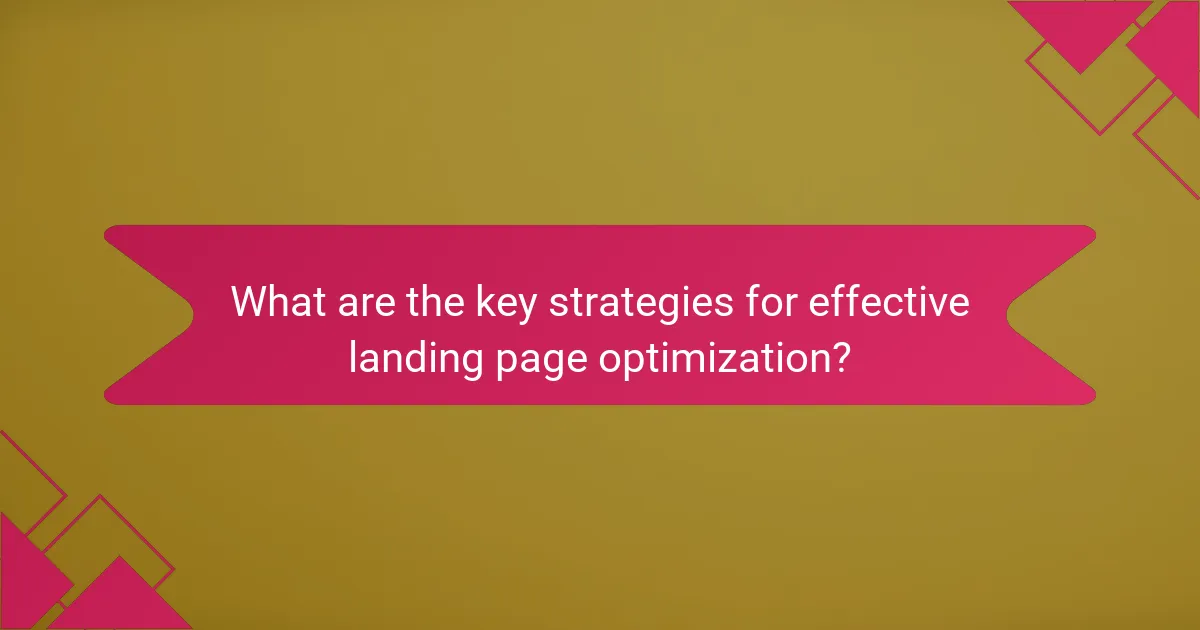
What are the key strategies for effective landing page optimization?
Effective landing page optimization involves strategies that enhance user experience and drive conversions. Key approaches include crafting clear headlines, optimizing call-to-action buttons, and ensuring responsive design for mobile users.
Clear and compelling headlines
Headlines are the first impression visitors have of your landing page, making them crucial for engagement. A strong headline should be concise, relevant, and convey the main benefit of your offering. Aim for headlines that are around 6-12 words to maintain clarity and impact.
Consider using action-oriented language or posing a question to pique interest. For example, instead of “Our Services,” use “Transform Your Business with Our Expert Solutions.” This approach directly addresses the visitor’s needs and encourages them to read further.
Optimized call-to-action buttons
Call-to-action (CTA) buttons guide users toward the desired action, such as signing up or making a purchase. To optimize CTAs, use contrasting colors to make them stand out and ensure they are placed prominently on the page. A good rule of thumb is to have one primary CTA above the fold and additional CTAs as users scroll down.
Text on the buttons should be clear and action-oriented, such as “Get Started” or “Claim Your Free Trial.” Avoid vague phrases like “Submit,” as they do not convey the value of clicking the button. Test different phrases and placements to see what resonates best with your audience.
Responsive design for mobile users
With a significant portion of web traffic coming from mobile devices, responsive design is essential for landing page optimization. A responsive layout ensures that your page adapts to various screen sizes, providing a seamless experience for all users. This includes adjusting images, text sizes, and button placements for mobile viewing.
To enhance mobile usability, prioritize fast loading times and easy navigation. Aim for a load time of under three seconds, as delays can lead to high bounce rates. Implementing mobile-friendly features, such as larger touch targets for buttons, can significantly improve user engagement and conversion rates.
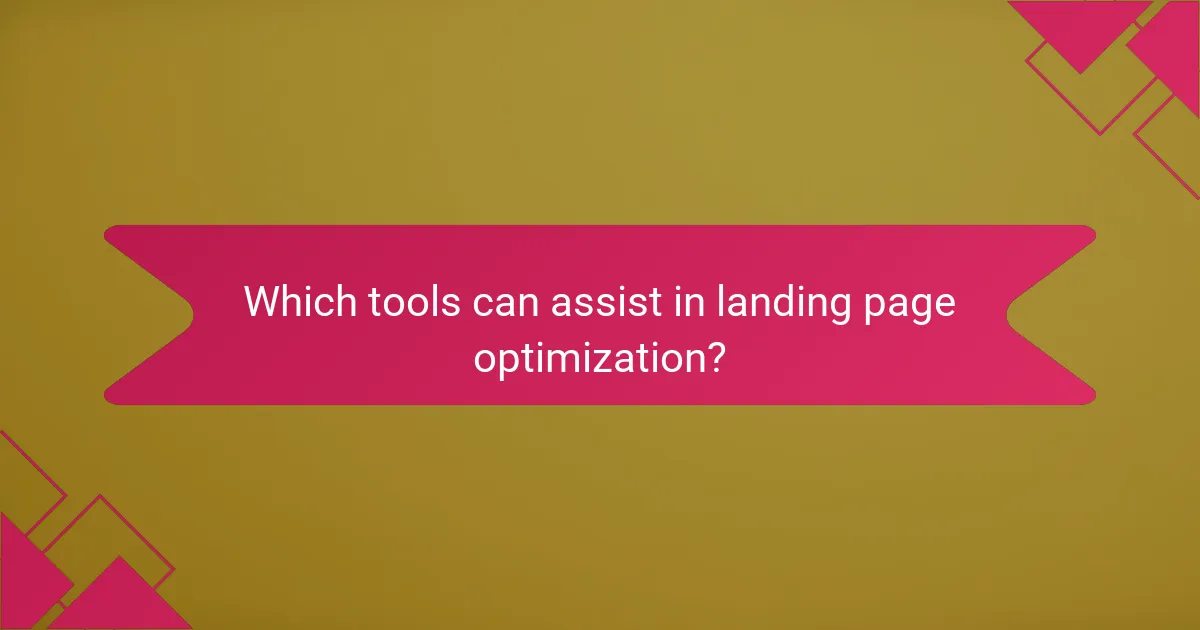
Which tools can assist in landing page optimization?
Several tools can significantly enhance landing page optimization by providing insights and facilitating testing. Utilizing these tools can help improve conversion rates and overall performance by analyzing user behavior and testing different page elements.
Unbounce for A/B testing
Unbounce is a powerful platform specifically designed for creating and testing landing pages through A/B testing. It allows marketers to easily create multiple versions of a page to determine which elements lead to higher conversions.
When using Unbounce, focus on testing key components such as headlines, call-to-action buttons, and images. A common practice is to run tests for at least two weeks to gather sufficient data before making decisions based on the results.
Google Analytics for performance tracking
Google Analytics is essential for tracking the performance of landing pages by providing detailed insights into user behavior, traffic sources, and conversion rates. By setting up goals and funnels, you can assess how well your landing page is performing in real-time.
To maximize its effectiveness, regularly review metrics such as bounce rate, average session duration, and conversion rate. This data can help identify areas for improvement and inform future optimization strategies.
Hotjar for user behavior insights
Hotjar offers valuable insights into user behavior through heatmaps, session recordings, and feedback polls. These features allow you to see how visitors interact with your landing page, highlighting areas that may need adjustments.
Utilizing Hotjar’s heatmaps can reveal which sections of your page attract the most attention, while session recordings can help identify usability issues. Combining these insights with other tools can lead to more informed decisions and enhanced user experience.

What are the best practices for creating high-converting landing pages?
High-converting landing pages effectively capture visitor interest and drive actions, such as sign-ups or purchases. Key practices include using persuasive copy, incorporating social proof, and ensuring fast loading times.
Use of persuasive copywriting
Persuasive copywriting is essential for engaging visitors and motivating them to take action. Focus on clear, benefit-driven language that addresses the needs and pain points of your target audience. Use strong calls to action (CTAs) that create a sense of urgency, such as “Sign up today for exclusive access!”
Consider employing techniques like storytelling or emotional appeals to connect with visitors on a personal level. Avoid jargon and keep the language simple and relatable to enhance understanding and retention.
Incorporation of social proof
Social proof, such as testimonials, reviews, and case studies, builds trust and credibility for your landing page. Displaying positive feedback from satisfied customers can significantly influence potential buyers’ decisions. Highlight metrics, like “Join over 10,000 satisfied users,” to reinforce your product’s value.
Utilize visual elements, such as star ratings or user photos, to make social proof more impactful. Ensure that the testimonials are genuine and relevant to your audience to maximize their effectiveness.
Fast loading times
Fast loading times are crucial for retaining visitors and reducing bounce rates. Aim for a loading time of under three seconds, as delays can lead to significant drops in conversions. Optimize images, leverage browser caching, and minimize HTTP requests to enhance performance.
Use tools like Google PageSpeed Insights to identify areas for improvement. Regularly test your landing page’s speed across different devices and networks to ensure a smooth user experience for all visitors.

What metrics should be monitored for landing page success?
To gauge landing page success, focus on key metrics such as conversion rate, bounce rate, and average time on page. Monitoring these metrics helps identify areas for improvement and optimize user experience.
Conversion rate
The conversion rate measures the percentage of visitors who complete a desired action, such as making a purchase or signing up for a newsletter. A higher conversion rate indicates that your landing page effectively persuades visitors to take action.
To improve conversion rates, consider A/B testing different elements like headlines, calls to action, and images. Aim for a conversion rate in the low to mid single digits for most industries, but this can vary widely based on the niche.
Bounce rate
Bounce rate refers to the percentage of visitors who leave your landing page without interacting with it. A high bounce rate may indicate that the content is not engaging or relevant to the audience.
To reduce bounce rates, ensure that your landing page aligns with user expectations and provides clear, valuable information. A bounce rate below 40% is generally considered good, while rates above 70% may signal a need for significant changes.
Average time on page
Average time on page measures how long visitors stay on your landing page before navigating away. Longer durations often suggest that users find the content engaging and informative.
To increase average time on page, incorporate compelling visuals, informative content, and clear navigation. Aim for an average time of at least one to two minutes, but this can vary based on the complexity of the information presented.
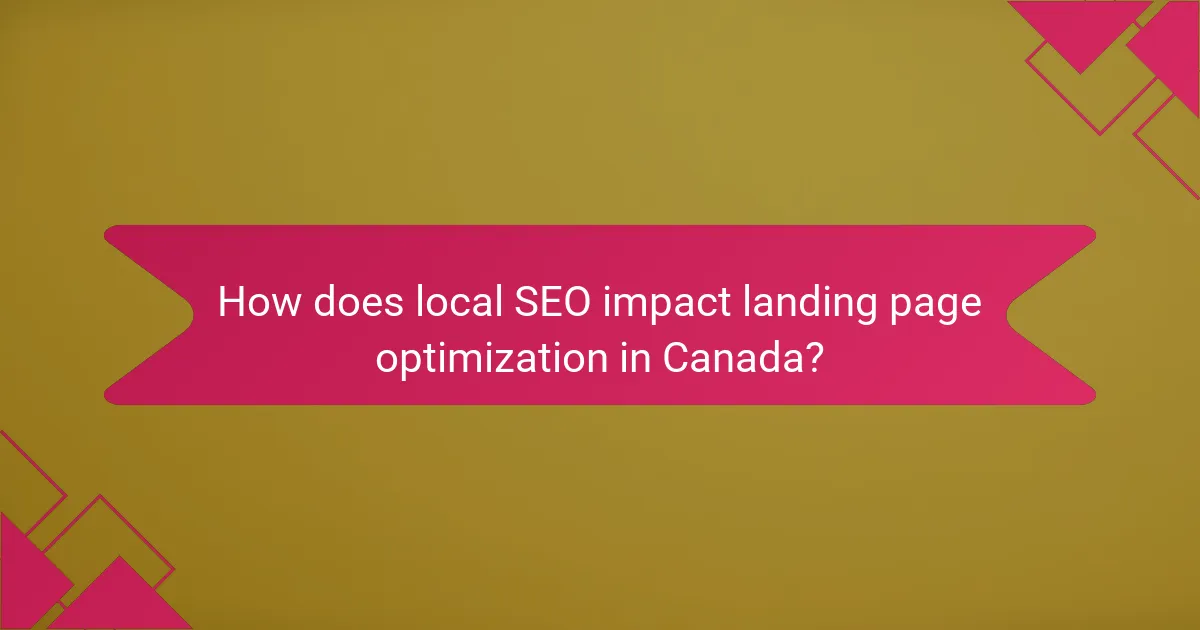
How does local SEO impact landing page optimization in Canada?
Local SEO significantly influences landing page optimization in Canada by enhancing visibility in local search results. By focusing on location-specific strategies, businesses can attract more relevant traffic and improve conversion rates.
Importance of local keywords
Local keywords are essential for optimizing landing pages because they help connect businesses with nearby customers. Incorporating terms that reflect local intent, such as city names or regional slang, can improve search rankings and relevance.
When selecting local keywords, consider using tools like Google Keyword Planner or SEMrush to identify popular search terms in your area. Aim for a mix of short-tail and long-tail keywords to capture various search intents.
For example, a bakery in Toronto might optimize for keywords like “best cupcakes Toronto” or “Toronto bakery delivery.” This targeted approach can lead to higher engagement and better conversion rates from local visitors.
